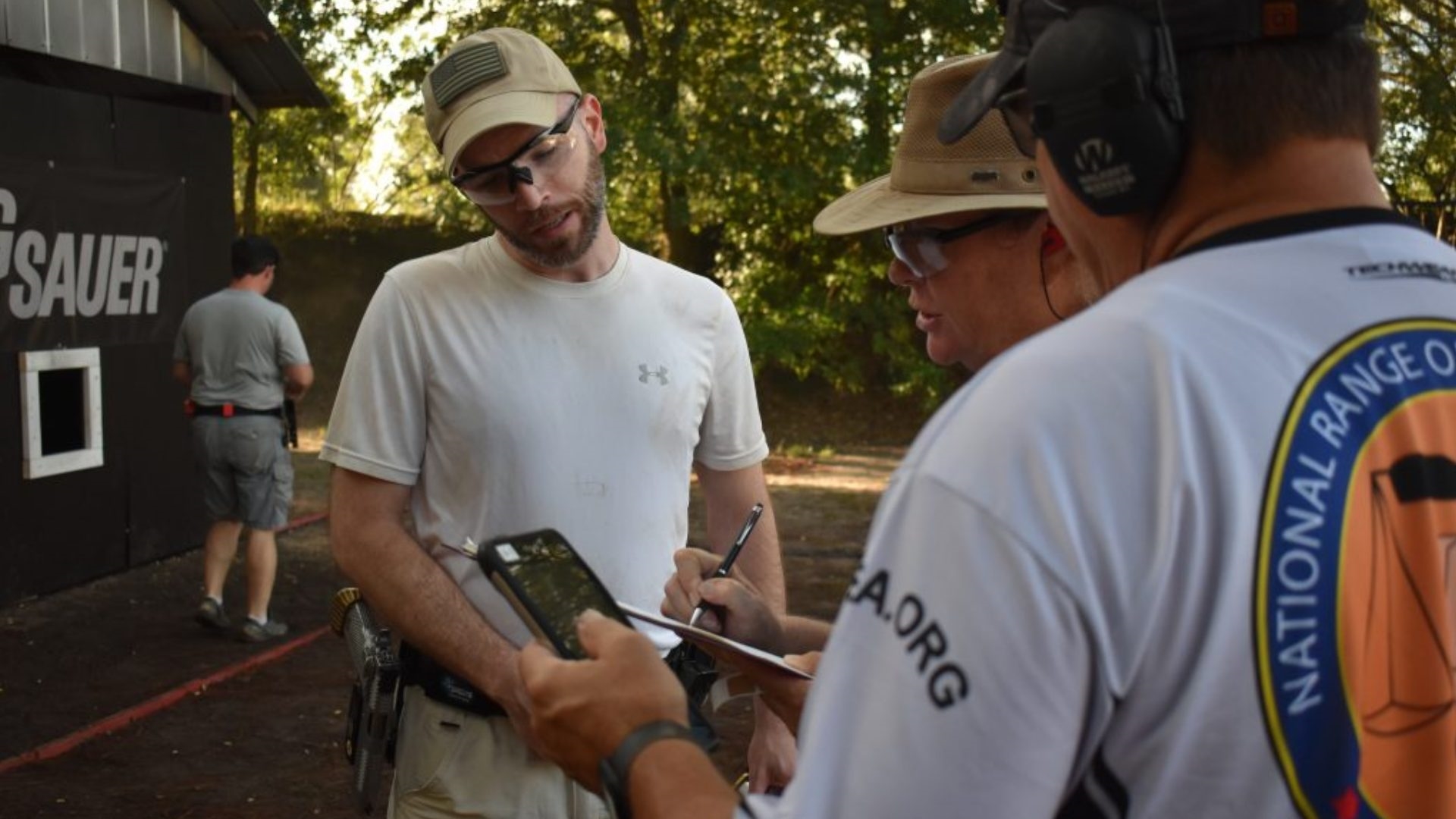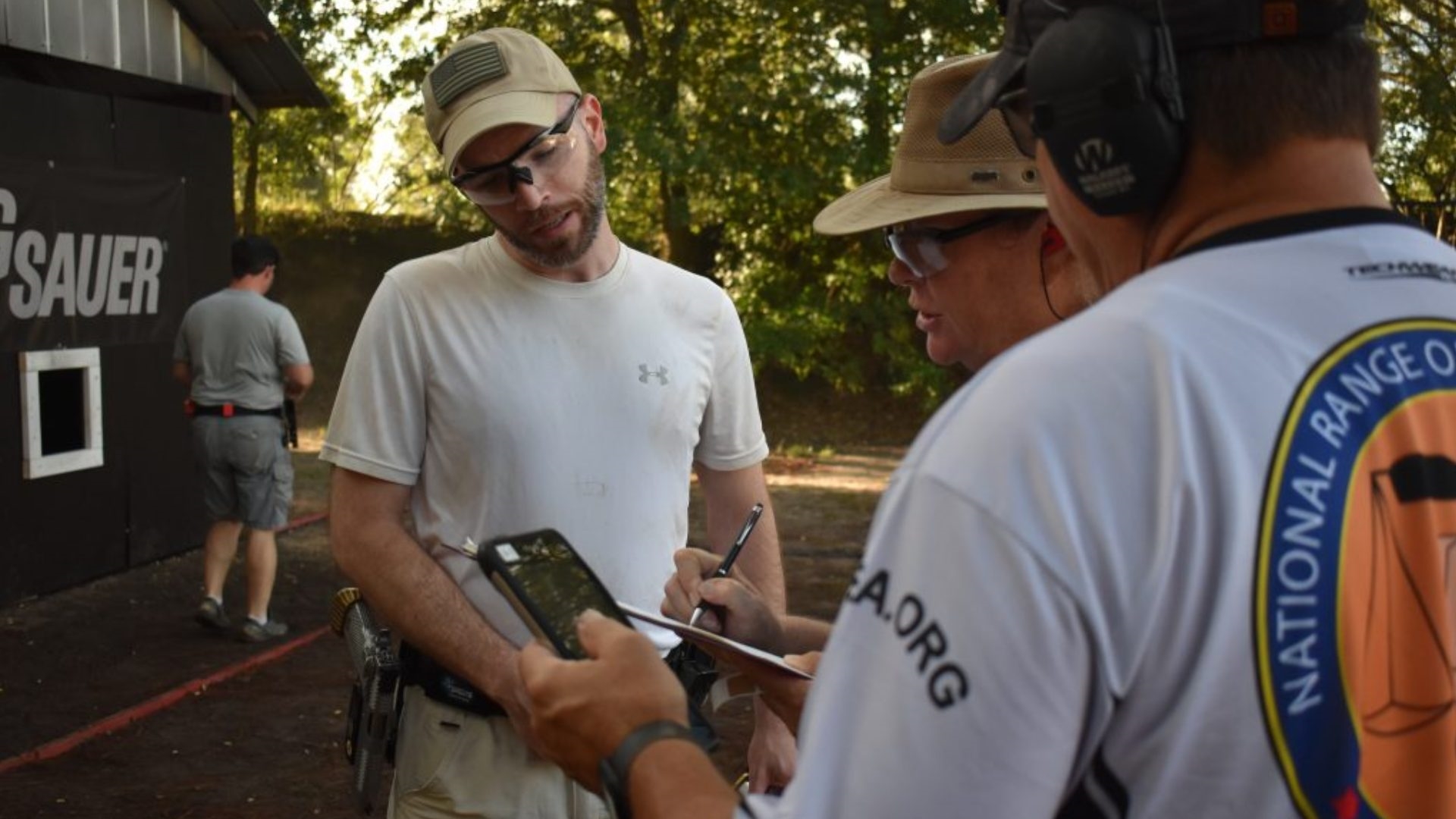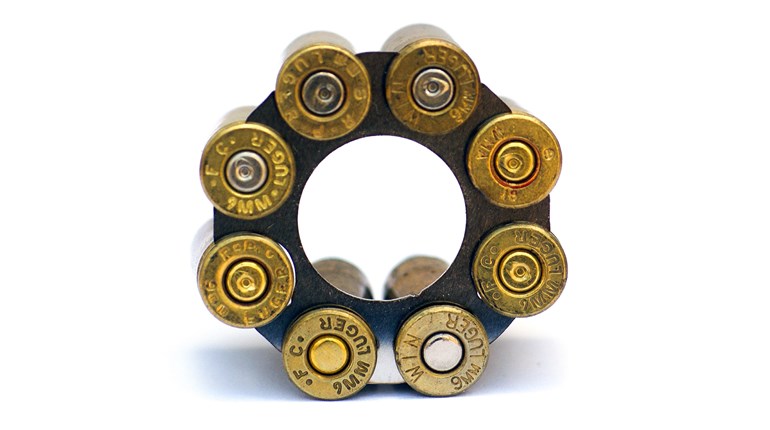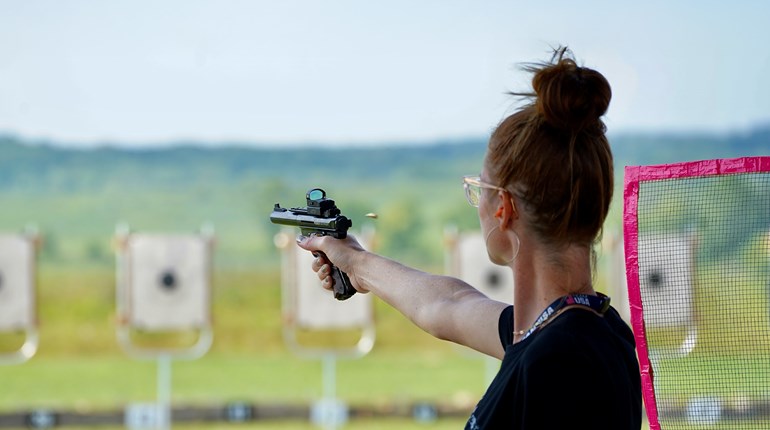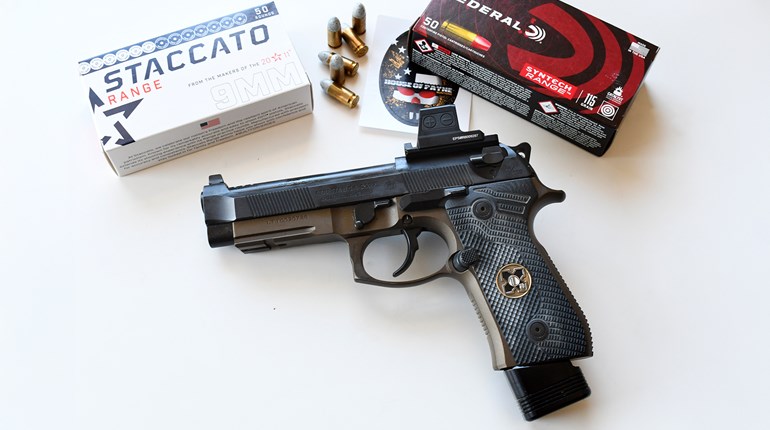
In terms of numbers, revolver shooters are a small percentage of action-shooting competitors. And it’s not be hard to see why.
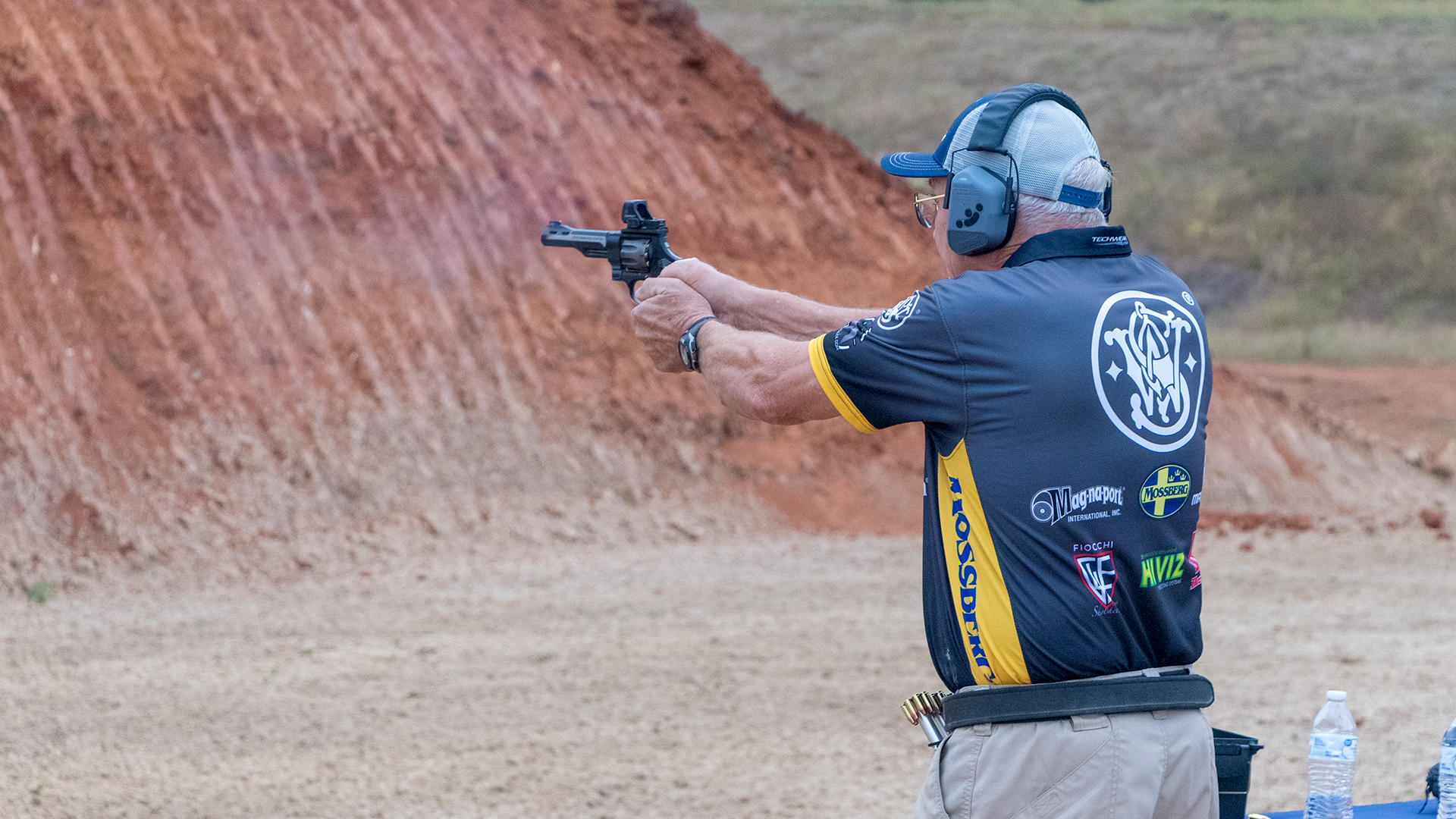
Revolvers are at a distinct disadvantage when compared to semi-automatics. Even the eight-shot guns, like Smith & Wesson’s popular 9 mm Luger Model 929 and .357 Mag./.38 Spl. Model 627 fall well below the capacity of autoloaders. Not only can one not waste rounds, but even careful shooting will involve a lot more reloads per stage, and they are all on the clock. That involves more complex stage management with reloads carefully planned. Plus, those reloads are more difficult to execute than with a semi-automatic.
Revolver shooters can’t just shift the gun hand thumb and punch out the magazine while the offhand slams in an already grabbed fresh mag. Popping the cylinder open allows the rounds to be ejected, but it takes the offhand to accomplish that, while hoping a fired case doesn’t hang up in the cylinder. Even with a clean ejection, there’s additional time expended in getting the offhand back down to the reload and then up and into the gun. It’s not a simple operation, especially when running full speed between shooting positions. Then there’s the trigger.
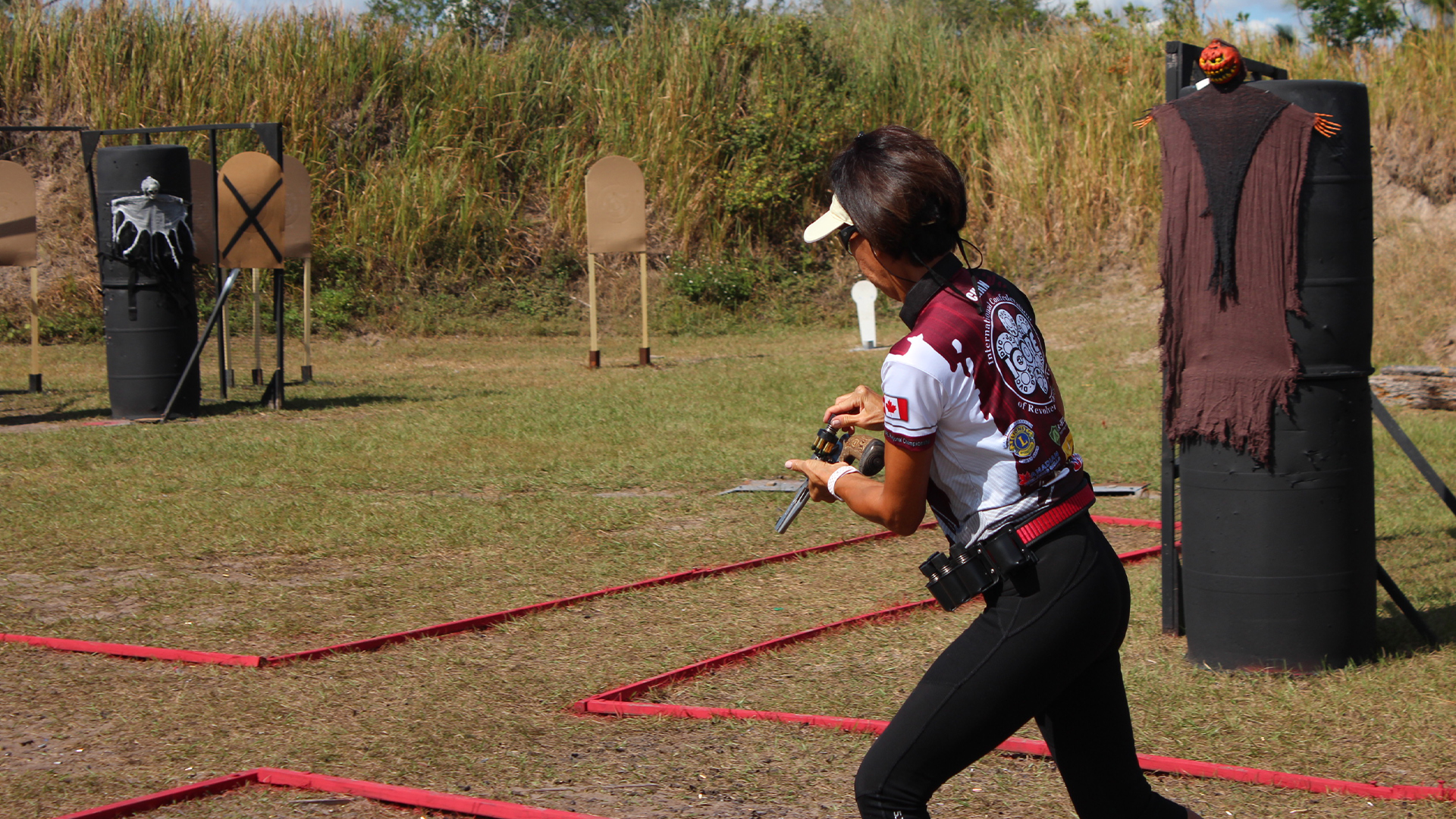
Double-action revolvers can have the hammer cocked to produce a light and crisp three- to four-pound trigger pull, but you won’t see competitive shooters doing that. Most upper-level competitors don’t even have a hammer spur on their revolver. For them it’s all double-action. Since most double-action revolvers leave the factory with a 12- to 13-pound double-action pull in order to be able to light off any primer used, it’s common for competitive shooters to have custom work done to reduce that pull weight to the six- to eight-pound range. With those pull weights, one can’t just grab ammo off the dealer’s shelves. It now means handloading becomes an integral part of the revolver experience, with the careful selection of primers (Federal are preferred) and precise primer seating depth to assure a bang instead of the dreaded click. But even with that, there is still the lengthy double-action trigger pull that takes time to master if accurate shots are to be achieved. Revolvers are significantly more difficult to master than semi-automatics and that dissuades many shooters. But not all.
For some shooters, competitive shooting satisfaction is measured less by their overall spot on the leaderboard than it is by their meeting their personal achievement goals. The ability to master a difficult tool under competition conditions counts a lot with them. Revolvers provide that challenge, and despite the smaller number of wheelgunners, there are still plenty of competitive shooting events where they can meet that challenge.
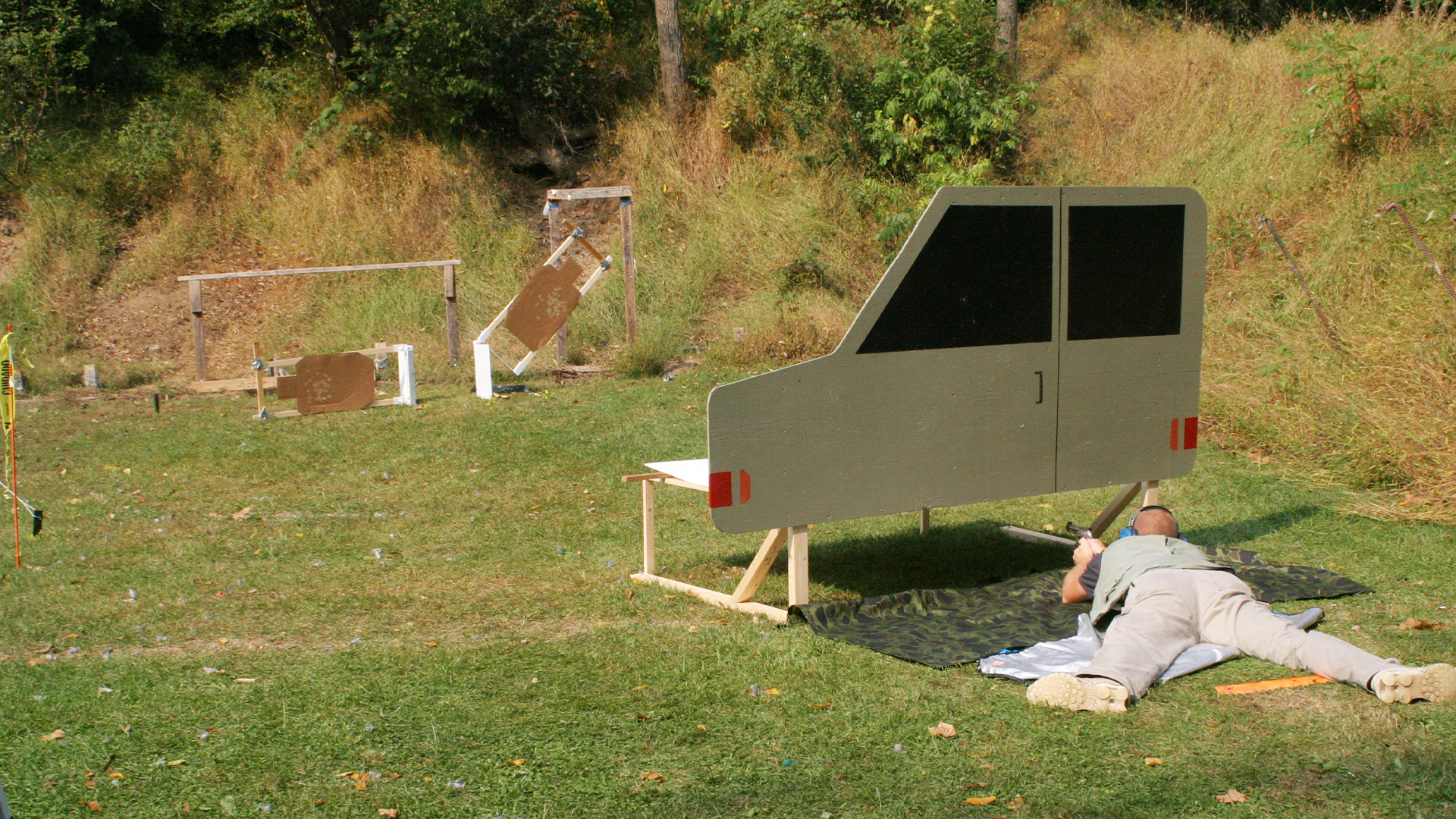
Revolver divisions are incorporated into USPSA, Steel Challenge, IDPA and Action Pistol, while ICORE is exclusively revolver. And there’s enough flexibility within to allow a lot of different guns to be used.
IDPA is the most restrictive with a 4¼-inch barrel length being the maximum and no optical sights allowed. Eight-shot guns are allowed but only six rounds may be loaded, which discourages their use. There is one division for guns loaded with speedloaders and another for those fed with moon clips. The .38 Spl. is the minimum caliber in the first division and Smith & Wesson’s Models 686, 586 and 66 are popular choices, although the Ruger GP-100 has its share of devotees. The moon clip division has a higher minimum caliber of .357 Mag., making Smith & Wesson’s 610 (with .40 S&W) and the venerable Smith & Wesson 625 .45 ACP the dominant guns there. In keeping with their defensive handgun roots, IDPA also has a division for the classic five-shot .38 Spl. “snubby” with a 3½-inch maximum barrel length that lets the Smith & Wesson J-frames play.
USPSA allows longer barrels—but no optics—and breaks Revolver into Minor and Major Power Factor scoring. Smith & Wesson dominates here. In fact, at the 2023 USPSA Nationals, 90 percent of the wheelgunners opted for Smith & Wesson guns, with the eight-shot 9 mm Luger 929 and the .357 Mag. 627 the favorites.
The revolver menu expands considerably when one gets into ICORE, Action Pistol and Steel Challenge. The minimum centerfire caliber in ICORE is .32 H&R Magnum, while Action Pistol and Steel Challenge require 9 mm Luger/.38 Spl. Divisions exist for six-shot speedloader-fed guns, or six- and eight-shot moon clip guns. All three also have divisions for metallic sights and optical sights. Adding to that varied menu is the ability to shoot revolvers chambered in .22 Long Rifle with either metallic or optical sights, which adds a home for Smith & Wesson’s 10-shot 617.
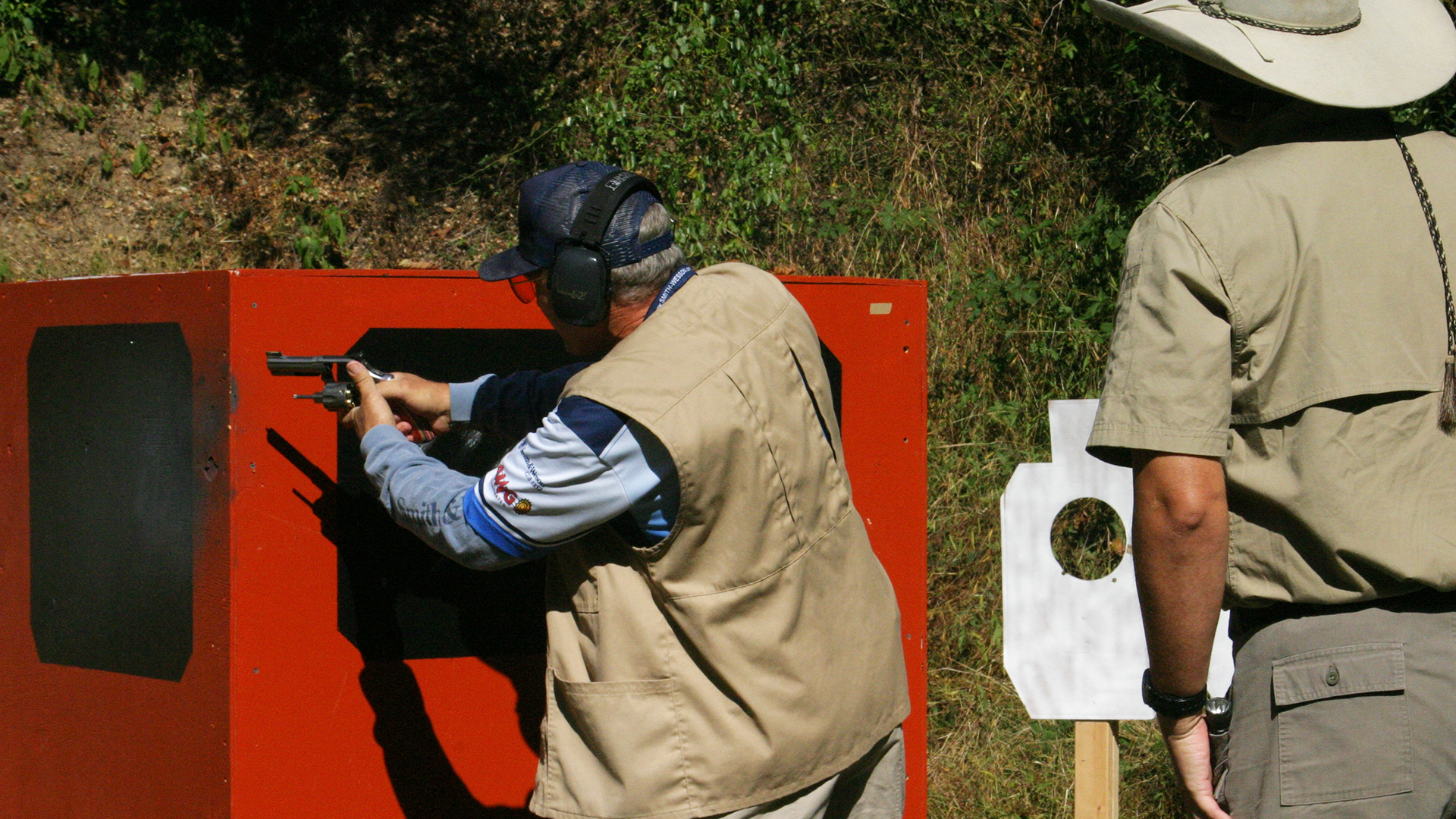
For those that work hard at mastering revolver skills, success can come at the local match level. Enough so that one can become a bit smug. However, “wake up calls” have an annoying habit of showing up.
My “wake up call” came more than a decade ago at an IDPA National Championship in Berryville, Arkansas, when I was squadded with Jerry Miculek. He is the acknowledged master of the revolver and may well be the best revolver shooter who ever lived. I had obviously heard of him, but had never watched him shoot. Our first stage was a long and wide El Presidente. The three targets were about 15 yards downrange with about five yards between them. This course of fire requires two rounds at each target, reload and two more rounds at each target, which are then scored. Complicating that was a gentle rain (still falling) that had muddied up the shooting box, making footing a bit slick. The start position was facing up range with the wrists above the shoulders in the surrender position. I was up first and shooting a Smith & Wesson 686 speedloader-fed .38 Spl. revolver, which in those days required a 125 PF—.38 Spl. +P level. But the 686 soaked up that recoil well and had stood me in good stead at the local level, including winning High Overall at two Tier One IDPA matches.
At the beep, I managed to negotiate the downrange turn without face planting. My time for the turn, I draw, six rounds at the 15-yard targets, reload and six more was 11.76 seconds with only two down points (1/2-second each at the time). My final score was 12.76 seconds. Subtracting the time for the slick-surfaced turn, draw and reload, that worked out to about .63 seconds per round at 15-yard targets, in the rain and with only two down. I thought that was a pretty good shooting with a double-action revolver.
Jerry stepped up next and quickly disabused me of that notion. He thumbed a .45 ACP moon clip into his Smith & Wesson 625 and took the start position. At the beep, he spun, drew and turned that 625 into a machine gun. Six rounds out, reload and six more—7½-seconds. More impressive, he was down zero. My math skills can’t even begin to determine how fast he was working that trigger.
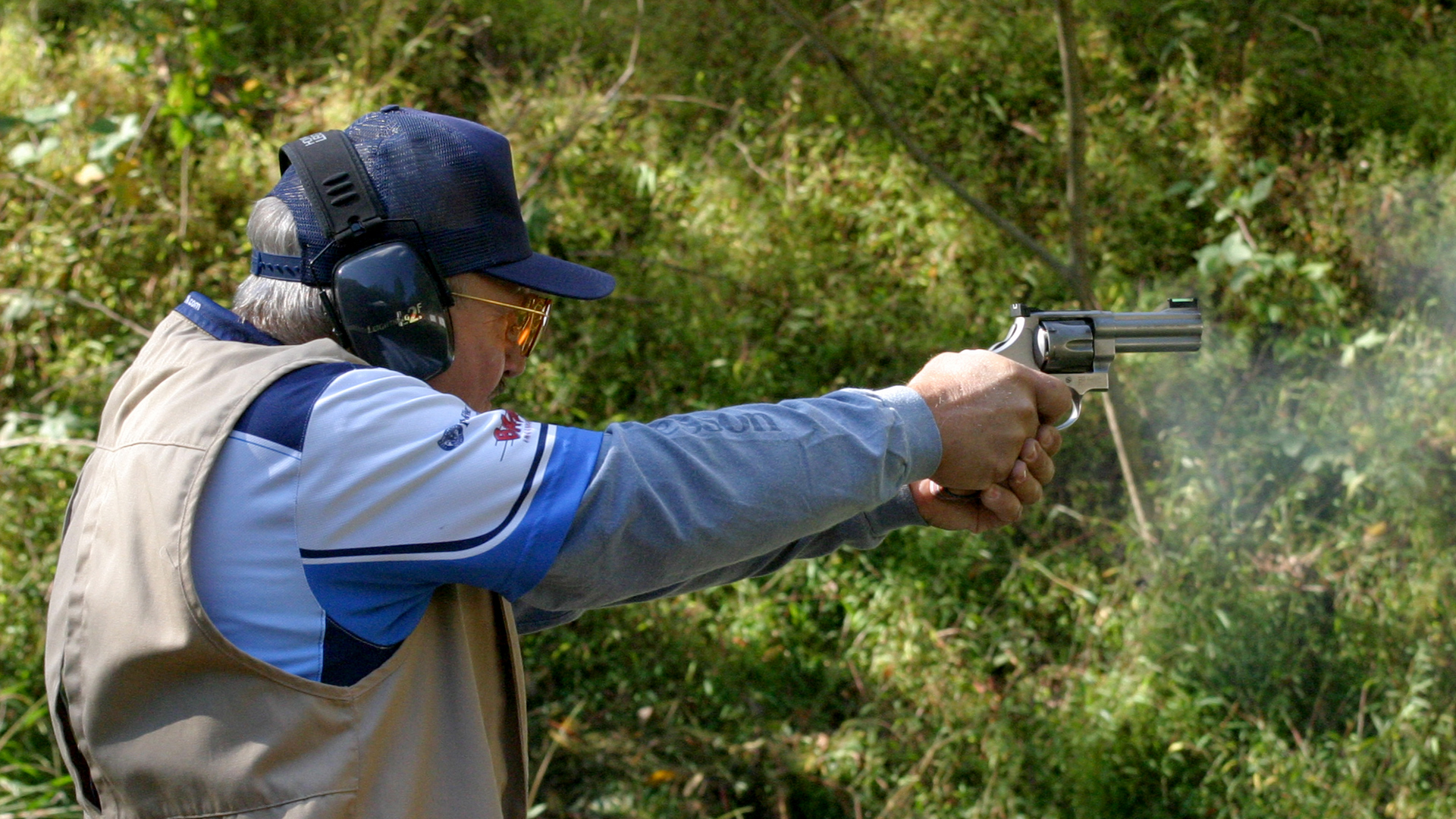
Watching a masterful performance like that might be discouraging for some shooters. But many wheelgunners see it as inspiring. Yes, it can be done with a revolver. It just depends upon the skill of the operator. And there are a more than a few wheelgunners out there who want to develop that skill. It becomes a personal challenge.
That’s one reason, and it could even be the biggest, why revolvers still matter in competitive shooting.





